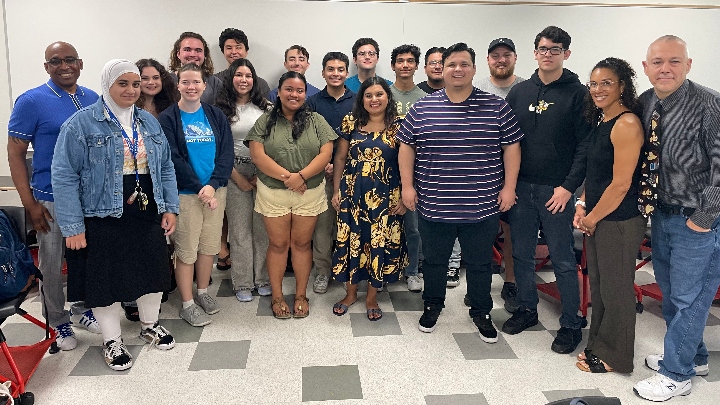Teaching Possibilities program bridges a critical gap for aspiring educators

Daniel Castro had always viewed teaching as something of a fallback option. It wasn’t that the physics major at San Diego State University had no interest in becoming an educator; it’s that an industry career was always his priority.
One week in late July, however, may have just changed his mind.
“This has really solidified teaching as something that I do have a lot more interest in doing,” said Castro after attending Teaching Possibilities — a 5-day workshop led by faculty in SDSU’s School of Teacher Education.
“It's been a good experience to reflect on my own academic career from as far back as I can remember and reflect on those connections that I made with teachers."
Launched thanks to funding from the Center for Teaching Critical Thinking and Creativity, Teaching Possibilities helped current SDSU undergraduate students explore education careers, with a special emphasis placed on critical thinking, the realities of the profession and pathways into the classroom. In all, 15 students from majors in the sciences, mathematics, language development and the humanities completed the week.
STE lecturers Eric Ginberg, Mark Jeffers and Emily Watson — who have decades of K-12 classroom teaching experience among them — organized and led the workshops. Their goal was to help students bridge the gap from mastering their disciplines to being prepared to foster constructive relationships with students.
That’s not always easy. Jeffers said the transition from majors to teaching credential programs can often be akin to being thrown into the deep end.
"It’s important to remember you're teaching human beings who will remember you more than they remember the subject that you taught them,” Jeffers said. “You need to understand how to relate to students. You need to allow students to be creative and not stifle them. If you're trying to box in everyone, those are the things that make teaching miserable."
Throughout the week, participants were peppered with questions to make them think critically about their own experiences in education. Exercises also encouraged them to consider their own identities to get them thinking about teaching students from different cultures.
They also had the chance to hear from a panel of recent School of Teacher Education alumni who are now in the profession.
"It's been really interesting to watch their light bulb moments,” Watson said. “Yesterday, we talked about culture and community. I loved just hearing their stories from when they were in the classroom, hearing how teachers either connected with them or didn't.”
This is the first year Teaching Possibilities has been offered. Ginsberg admits he was not sure what kind of interest level to expect for the pilot program, but the turnout and response left him hopeful for the future. The program has already been greenlit for the summer of 2026 — and he hopes it can one day be expanded into a larger series.
“We're seeing it as a series of interconnected camps to increase support, engagement and preparation for all levels — from undergrad through the teaching credential programs,” Ginsberg said. “Eventually, I’d love to have camps that are for districts or veteran teachers. This is a difficult, challenging profession and people need more support."

